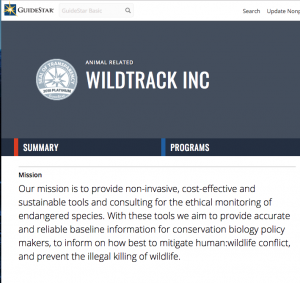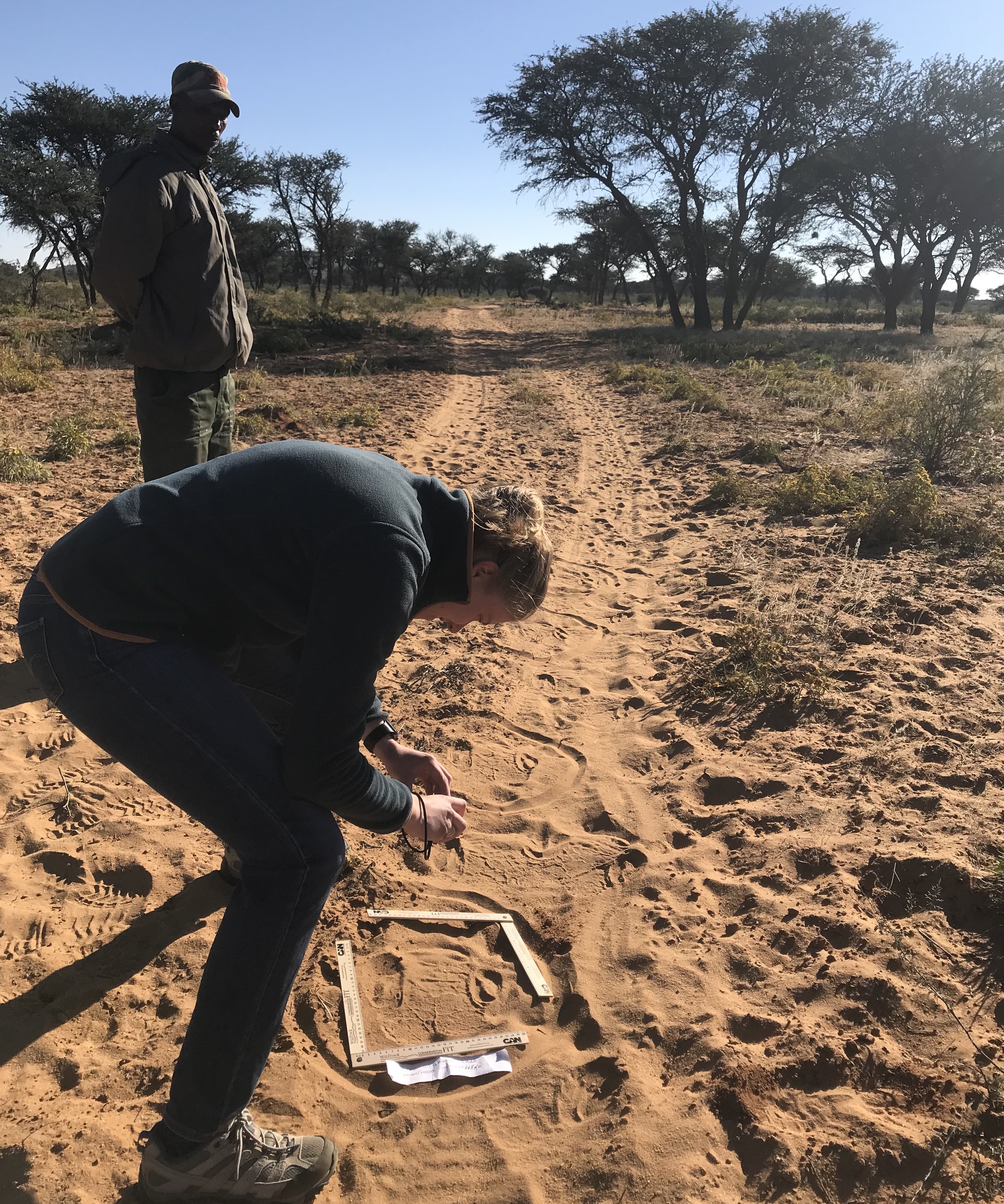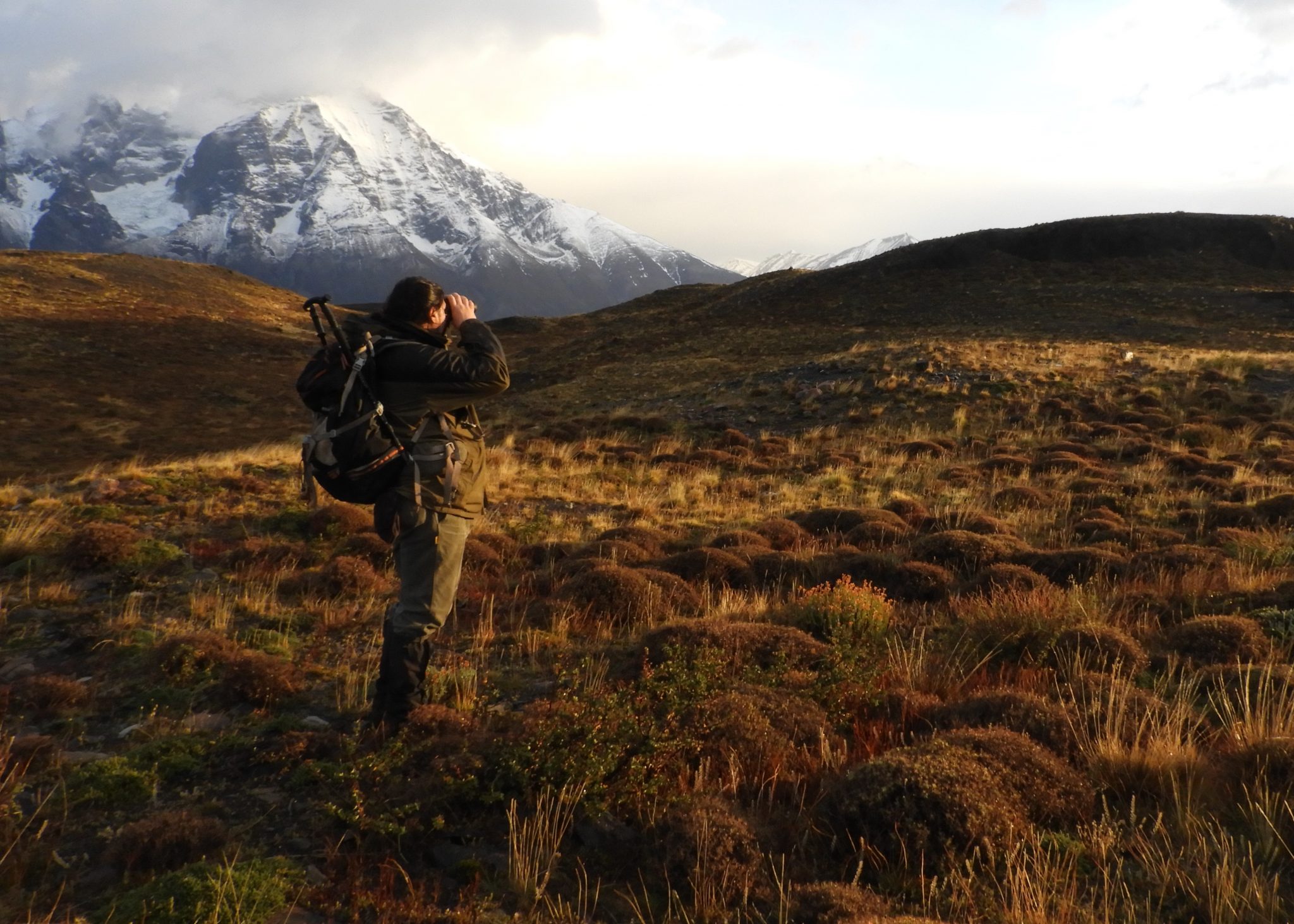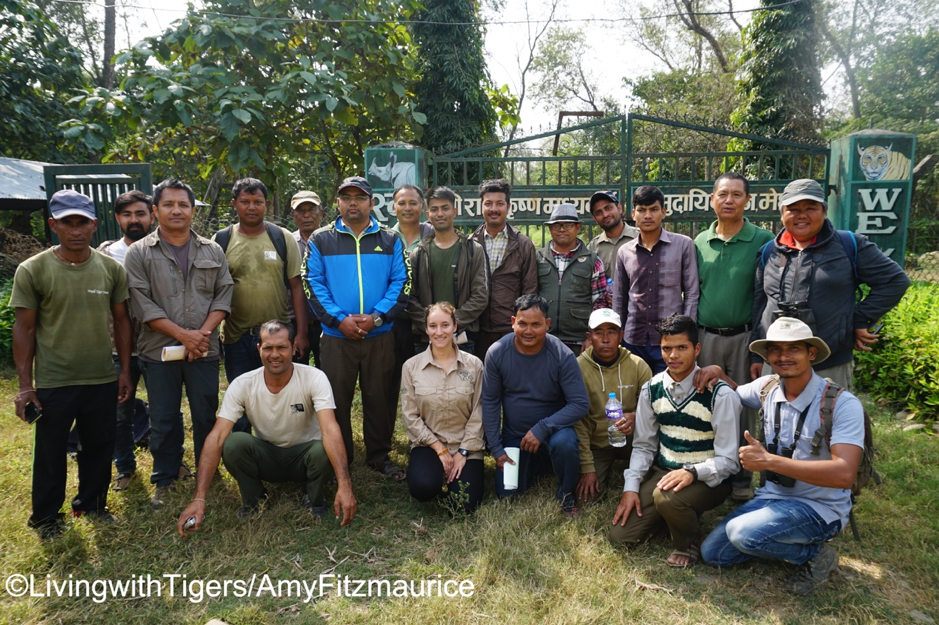Living with Tigers Project lead researcher Amy Fitzmaurice ran a successful training workshop for Nepal Tiger Trust (NTT) on WildTrack’s Footprint Identification Technique (FIT).
News & Events - page 10
Latest news and events from WildTrack

Read More
Visit our new WildTrack Site!
Check out our new WildTrack website! We showcase our academic and research work and bring our citizen science portal, ConservationFIT on board to streamline our...

Read More
Documentary about WildTrack earns two Emmy awards
WildTrack’s work in Namibia, documented on location by film-makers Ray and Susan Ellis of Footpath pictures , has just been honoured with two Emmy awards!...

Read More
WildTrack earns GuideStar Platinum status
Celebrate with WildTrack as we earn our first GuideStar Platinum status!

Read More
My Experience Tracking Rhinos in Namibia with WildTrack
By Katrina Leser, College of Veterinary Medicine, University of Florida

Read More
Pumas at the end of the World...
Pumas range over all the Americas - this species has one of the widest distributions of all those we study.
